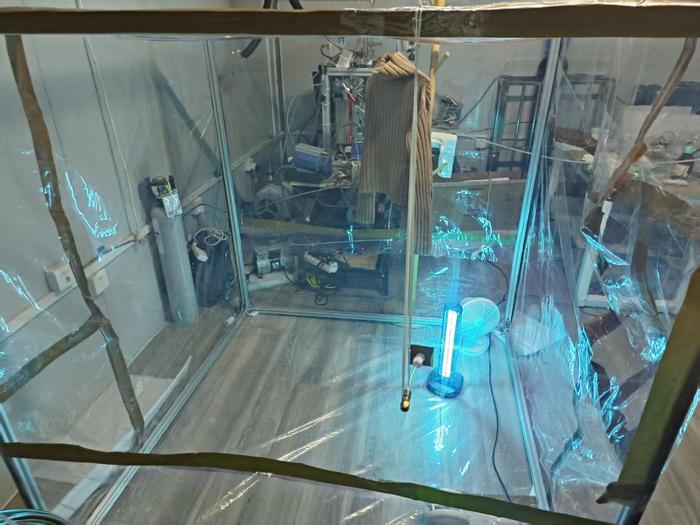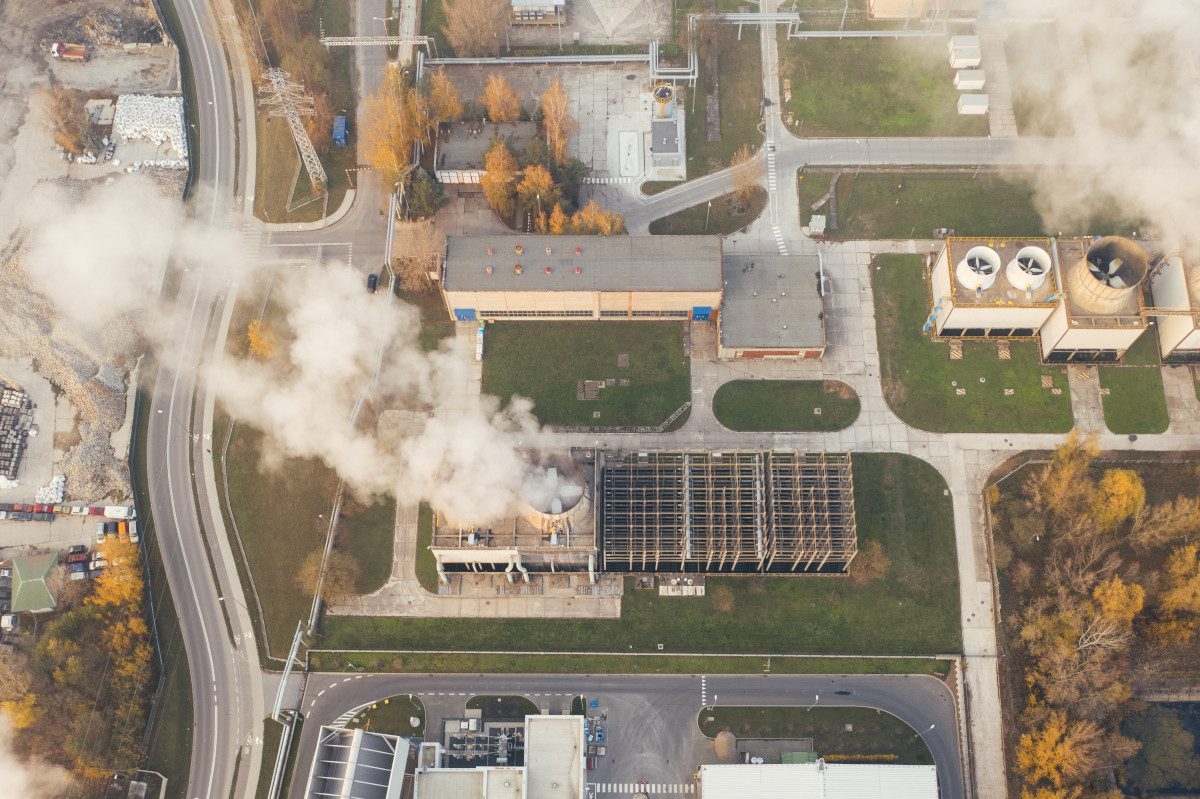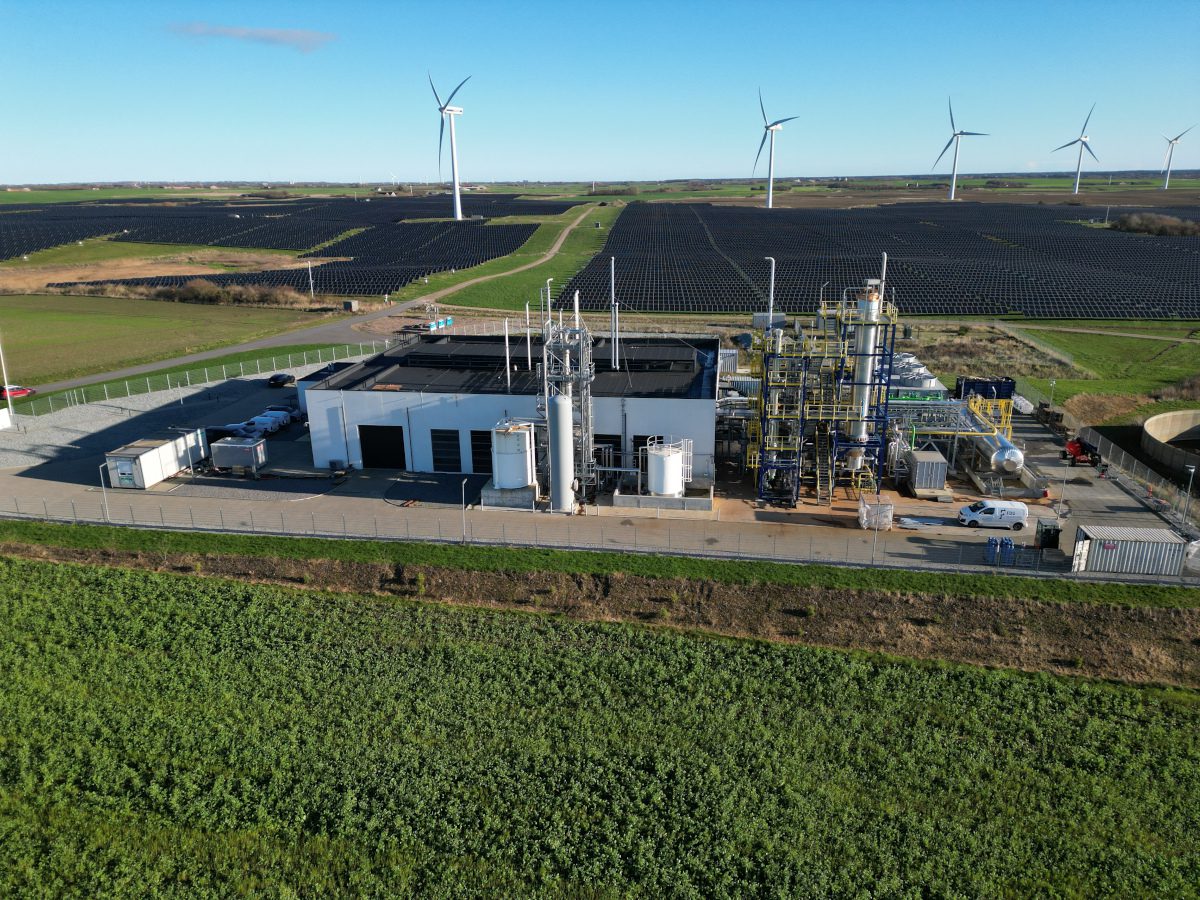As top politicos in Annapolis visit glittery mansions to shore up campaign contributions before the General Assembly convenes on Jan. 10 and a fundraising ban takes effect for the 90-day session, advocates and some legislators are left wondering if Gov. Wes Moore’s administration has the strategy to implement Maryland’s Climate Pollution Reduction Plan (CPRP).
Released late last year, the plan requires the state to invest billions in climate actions and pass bold legislation to accelerate clean energy transitions and hold fossil fuel companies accountable.
In the plan, the Maryland Department of the Environment (MDE) proposes a slew of legislative and executive actions to achieve the ambitious targets of a 60 percent reduction in greenhouse gas emissions from 2006 levels by 2031, 100 percent clean energy by 2035 and net zero emissions by 2045.
The 98-page document outlines a suite of executive and legislative actions, which, if implemented, are calibrated to bring more clean energy sources online, electrify buildings and transportation, decarbonize manufacturing and enable rebates for EVs. New clean energy standards would also strike trash incineration from the state’s renewable portfolio standard.
The document estimates a $1 billion investment in clean energy initiatives every year for the next several years to “enable more Marylanders to buy electric vehicles (EVs), install electric heat pumps, and switch to zero-emission devices that eliminate fossil fuel use.” It proposes raising $1 billion a year from green revenue bonds, carbon fees and hazardous substance fees, in addition to levying a pollution fee on fossil fuel-powered cars.
Making oil and gas companies pay for pollution is another potential revenue stream, it says, which is estimated to raise around $1 billion a year for boosting clean economy spending.
The MDE will assess if it is feasible to expand the Regional Greenhouse Gas Initiative (RGGI) to cover additional sources of emissions, the plan said. RGGI is a 12-state cap-and-invest program that makes fossil fuel-powered electricity generators pay for their carbon emissions above established limits. The proceeds assist the participating states in funding their clean energy projects.
Advocates welcomed the latest pollution reduction plan as bold and forward-looking but noted it is woefully short on implementation details, especially as the Maryland Department of Legislative Services estimated the state was in a $418 million budget hole for fiscal year 2025, projected to grow to $1.8 billion in five years.
In December, Moore vented his concerns about the shortfall when he addressed members of the Maryland Association of Counties. “If we don’t make hard choices now, Maryland’s budget challenges will grow. We will have less power to win the decade. And the public won’t trust us to use their taxpayer dollars responsibly,” he said in a speech punctuated with similar warnings.
And yet the Moore administration has so far kept mum about its environmental priorities, which are usually spelled out in the governor’s legislative package or bills shepherded by the MDE, the advocates said.
“It sounds like the MDE has come up with a laundry list of legislative actions and left it to the General Assembly to determine how and when to take action,” said Josh Tulkin, director of the Sierra Club’s Maryland chapter. He said it was not clear to him whether Moore’s office was coordinating with legislative leadership to come up with a proactive agenda or leaving it to individual members to introduce legislation to advance any of the recommendations in the CPRP.
“Raising that type of revenue requires top-level leadership,” Tulkin said of the $1 billion in annual climate funding projected in the plan. “If Maryland does not come up with ways to finance the plan, the people who will miss out on the climate benefits are mostly low- to moderate-income people and that would be inconsistent with the governor’s pledge to leave no Marylander behind.”
In a written statement, Carter Elliott, a press secretary for the governor’s office, said: “Maryland has made great progress and we will continue working toward our nation-leading goal of reaching net zero emissions by 2045.”
He said that the governor convened an environmental roundtable with advocates on Jan. 8 and emphasized a collaborative approach his administration is taking to work jointly with legislators and environmental leaders. “We are committed to fighting climate change because we know it goes hand in hand with economic development,” he added.
Kim Coble, executive director of the Maryland League of Conservation Voters, said she was disappointed that the administration did not explain how it would get the funds necessary to implement the clean energy initiatives.
“For example,” she said, “the plan calls for providing assistance to low- to moderate-income neighborhoods and subsidies for solar installation. And yet, there’s no money. So, that’s a big shortcoming in the plan.” She said the plan would need stewardship from the administration and the MDE to be implemented.
Betsy Nicholas, vice president of programs at Potomac Riverkeeper Network said there was a good amount of uncertainty ahead of the session about where the Moore administration stands on contentious climate legislations.
“On the positive side, this is a huge opportunity for the Moore administration to gear up and show us that they met their commitments and that they’re going to stick to them and fight hard for them. I don’t know if it’s going to happen,” she said.
Madia Coleman, a spokesperson for the MDE, said the climate pollution reduction plan follows the science to create a road map for achieving Maryland’s climate goals: “It is specific and includes both measures that are already well underway, such as standards for zero emissions vehicles and building energy performance standards, as well as new actions MDE and other agencies are taking this year,” she said.
She added that the agency has “a broad range of existing authority already in place to advance major parts of our climate plan without additional legislation. Building Energy Performance Standards, expected to be adopted in the next few months, Advanced Clean Cars, Advanced Clean Trucks – are critical pieces of implementing the climate plan.”
Del. Lorig Charkoudian, a Montgomery County Democrat, laid the blame for climate pollution squarely at the door of fossil fuel companies that “have acted with impunity and continue to receive subsidies mostly from the federal government,” she said. “So, it’s not a surprise that even a small state like Maryland is acknowledging that it needs a billion dollars a year to fight climate change.”
Del. Marc Korman, another Democrat from Montgomery County and chair of the Environment and Transportation Committee, said the budget situation hits multiple sectors, including transportation, which has an incredible overlap with the climate. “We have an administration that’s proposing cuts to transit. At the same time, they’re sending us this implementation plan,” he said. “You can’t meet climate goals if you’re cutting transit and encouraging more vehicle miles traveled and discouraging the more environmentally sensitive options.”
Tulkin of the Sierra Club said that Maryland could raise a portion of the $1 billion needed to fund the climate initiatives by redirecting existing resources being spent on subsidizing trash incineration or by diverting funds for highway expansion to fixing roads and transit-oriented development.
The MDE estimates that as of November 2023, $4.9 billion has been earmarked for Maryland under the federal Bipartisan Infrastructure Law and the Inflation Reduction Act, with around $3.8 billion for transportation and roughly $307 million for clean water. Another $249 million, the plan underscored, is made available through grants, rebates, and other initiatives to speed up the development of clean energy, clean buildings, and clean manufacturing.
Also included in the plan is the Clean Heat Standard, requiring clean heat measures to be deployed in buildings at an accelerated pace, with new space and water heating systems installed in multi-use buildings starting later in the decade.
A new Maryland Transportation Plan is proposed to reduce vehicle miles traveled per capita by 20 percent through smart public transit investments. The proposed Advanced Clean Fleets would require specific high-priority fleets of medium- and heavy-duty vehicles to transition to zero emission vehicles.
Michael Powell, who co-chairs the mitigation work group of the Maryland Commission on Climate Change, questioned whether the commercial real estate industry can invest $15 to $25 billion dollars by 2040 to improve building energy performance standards, as outlined in the CPRP, because of the shift to work-from-home and more businesses choosing not to renew their leases.
“Unless there was enormous help from the state government, I don’t think that the commercial sector or the multifamily sector can withstand that kind of investment over that time period,” he said, pointing out that Maryland was running a budget deficit. “I don’t think they can afford to fund it either.”
Powell called it “unrealistic” for a small state like Maryland to dictate expansion of cap-and-invest programs such as RGGI, especially when some states like Virginia are trying to leave the program.
Advocates say the MDE’s plan does give momentum to certain longstanding legislative demands that environmental groups have made for years, such as removing dirty energy sources from the renewable portfolio standard or diverting food waste from incineration to composting.
They hope that support from the state’s environmental regulator helps them get the bills passed. So far, environmental groups tracking the legislation have counted over a dozen climate-related bills likely to go before the General Assembly during the upcoming session. But the final count will be much higher, they said.
Legislation To Watch:
Responding to Emergency Needs from Extreme Weather (RENEW) Act
This landmark legislation would invest $900 million a year into making Maryland a cleaner, more resilient state despite the growing threat of climate disasters and without additional cost to Maryland taxpayers, according to the Chesapeake Climate Action Network (CCAN), a coalition of environmental nonprofits.
Jamie DeMarco, federal policy director at CCAN, said it was the most important bill for the legislature to pass this year. “And that would be paid for entirely by the 40 largest international fossil fuel companies. They would just write a check to Maryland and use that money to clean up the mess that they are responsible for,” DeMarco said. Moore has not endorsed the measure yet. He said that fossil fuel companies will likely challenge the measure in the court and will lobby hard to defeat the bill.
Clean Water Justice Act
This bill seeks to supplement the capacity of the state’s regulatory agency to protect its waterways following the regulatory void left by the Supreme Court’s decision in Sackett v. EPA.

“When the Supreme Court issued its ruling in the Sackett decision they took away an important environmental right of all Americans to ensure that our waters remain clean and protected from illegal water pollution,” explained Evan Isaacson, senior attorney for Chesapeake Legal Alliance.
With the ruling, he said, the Supreme Court turned over the job of protecting most of the nation’s waters to the states, which are now scrambling to understand how they need to respond. “After all, the enforcement provision of the Clean Water Act is what has made this bedrock environmental law so unique and effective over the last half century,” he said.
Reclaim Renewable Energy Act
The CPRP requires approximately 50 percent of electricity consumed in Maryland to be generated by renewable sources by 2030 and recommends taking out trash incineration from the state’s renewable portfolio standard (RPS), which currently ranks incineration at par with solar and wind energy sources. This is heartening for advocates who have for years urged lawmakers to stop counting dirty energy produced from burning trash as renewable energy and doling out millions in public subsidies to companies who operate incinerators.
Jennifer Kunze, Maryland director of Clean Water Action, said there were many reasons to believe the bill will pass this year because it is squarely focused on trash incineration; a version filed last year lumped together incineration with other dirty energy sources, such as chicken litter and biomass. “We’ve wasted $51 million over the last three years subsidizing trash incineration, which is the dirtiest way to produce electricity. It doesn’t deserve space and money from our renewable energy program,” said Kunze. The bill also has support from other nonprofit groups, including the Sierra Club and League of Conservation Voters.
Climate Crisis and Environmental Justice Act
With the backing of a number of nonprofit advocacy groups, the CCEJ Act is aimed at reducing fossil fuel emissions, and its passage is expected to put Maryland on a practical pathway toward a sustainable, resilient economy. It raises revenue by charging fossil fuel companies two types of fees, which will draw pushback from oil and gas companies. The bill didn’t pass last year. If passed this session, it is expected to generate billions of dollars for investment in clean energy infrastructure, while providing protective benefits to Maryland’s small businesses and its most vulnerable low- and moderate-income households.
Utility Transparency and Accountability Act of 2024
Shepherded by Charkoudian, the bill has a couple of key components. First, it prohibits ratepayer funds from being used for lobbying by utilities. “Right now, in Maryland law, utilities are not supposed to use ratepayer funds to do their lobbying and influencing policy, but it’s pretty vague. So, this bill ensures that utility costs going to influence rate are not put on ratepayers but instead come out of the profits that would otherwise be going to shareholders,” Charkoudian explained.
It also requires that utilities in Maryland are transparent about their votes at PJM, the regional transmission organization which operates the electric grid in the District of Columbia, Maryland and a dozen other states. Charkoudian said that because PJM policies have so significantly slowed Maryland’s transition to clean energy, it has undermined the state’s ability to intervene meaningfully.
“Nobody knows that that proposal was even considered and who voted it down,” Charkoudian said, adding that this bill requires that the utilities regulated in Maryland have to disclose their votes, particularly at lower level committees. “And they have to indicate in a report to the Public Service Commission how those votes are in the public interest,” the legislator said. The bill is likely to get pushback from the fossil fuel lobby and will test Moore’s resolve in resisting pressure from the powerful oil and gas lobby.
This story is funded by readers like you.
Our nonprofit newsroom provides award-winning climate coverage free of charge and advertising. We rely on donations from readers like you to keep going. Please donate now to support our work.
Donate Now
Electricity and Gas – Retail Supply – Regulation and Consumer Protection
Maryland enacted the Electric Customer Choice and Competition Act in 1999 and fully deregulated its energy market in hopes that competition would lower energy prices for electricity consumers. Instead, the arrangement allowed third-party suppliers to purchase energy from the wholesale market and sell it to businesses and residents at unregulated rates for profit. A bulk of research has shown that retail energy companies particularly target low- to middle-income groups through door-to-door advertising and employ misleading bait-and-switch marketing techniques to lure households into switching contracts, only to increase prices later.
“Opening Maryland’s residential energy market was supposed to benefit consumers. Instead, data is clear that these unregulated, sky-high prices have led to terminations and misery when folks can’t pay their utility bills—an essential service,” said Laurel Peltier, an energy justice advocate and chair of the Maryland Energy Advocates Coalition.
Federal data from 2022 shows a supposed “competitive market” cost each of the 370,000 Maryland families that switched to a retail supplier $483 more than regulated electricity.
“Maryland took a decisive step in 2021 to protect energy assistance accounts from retail energy’s sky-high rates. Yet hundreds of thousands of low-income families are still not protected,” Peltier said.
It’s encouraging that the bill—SB1—will help Maryland tackle major retail energy reform in 2024, she added. “Maryland’s low-income, older adults and immigrant families have paid a whopping $1.2 billion price tag for choosing retail energy. The bill’s key ingredient is applying pricing guardrails so that all Marylanders can choose retail energy and also be protected from price gouging,” Peltier said.
EmPOWER Maryland Reform Bill
The legislature is expected to make changes to EmPOWER Maryland, the state’s energy efficiency program to better align with the state’s emissions reduction goals. A similar bill passed the House in 2023 but didn’t receive a vote in the Senate. The expected legislation would shift the program’s goals from reducing electrical use to reducing climate pollution while maintaining a focus on energy conservation and in-home improvements like weatherization to reduce energy waste.
Emily Scarr, director of Maryland PIRG, a consumer protection group, said it was critical that the legislature act this year to update EmPOWER Maryland. “Weatherizing our homes and making the shift to efficient electric appliances and heating will help lower utility bills and protect our health, making energy efficiency amongst the smartest investments we can make in our clean energy future,” she said. She said that the group will continue advocating to rightsize utility profits on the program and ensure robust consumer protection guardrails.

















